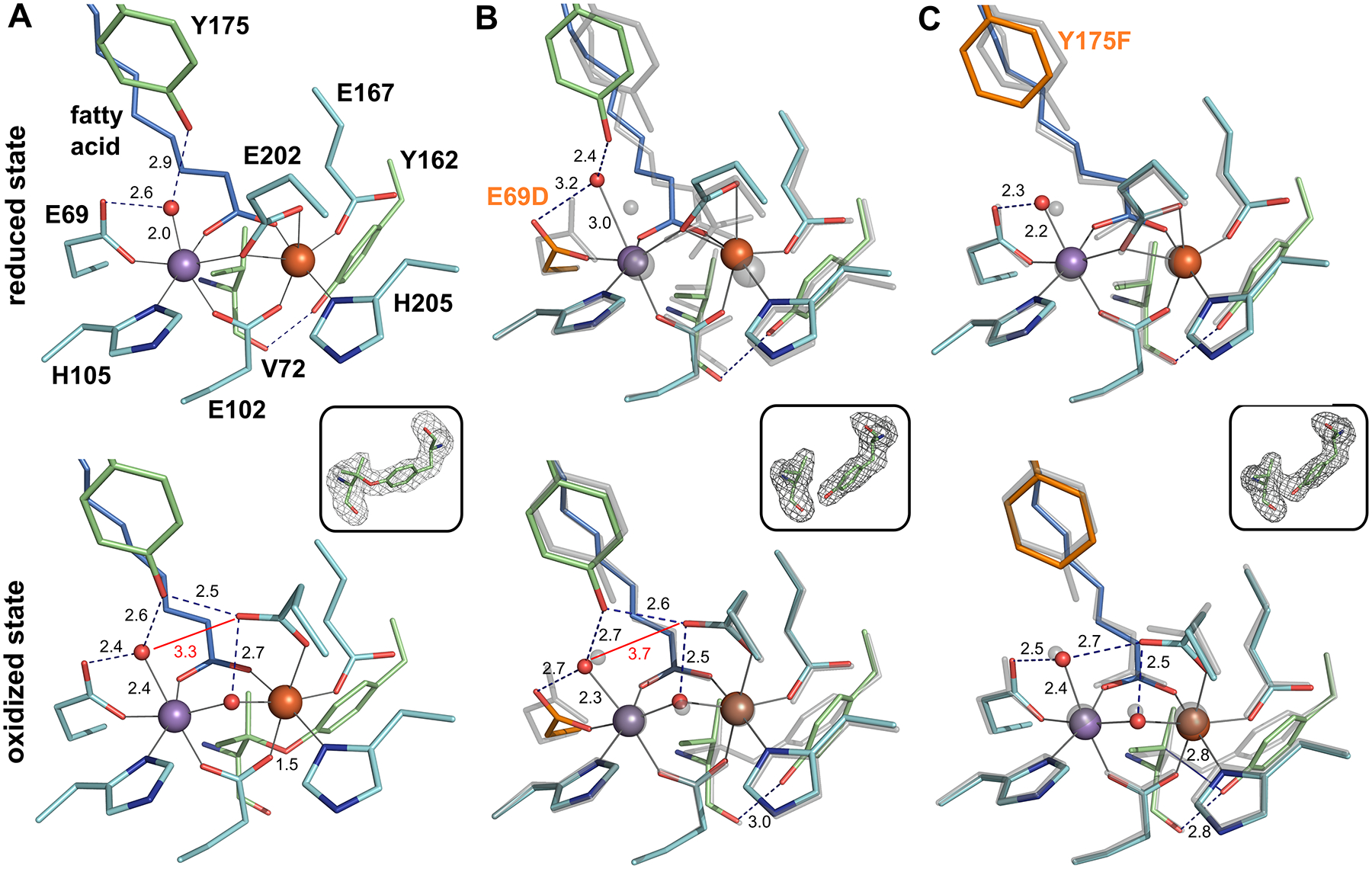Figure 7.

Active site structures of R2lox variants in the unactivated, reduced (top) and O2-oxidized resting state (bottom). All structures are shown in roughly the same orientation, with site A on the left. The E69D and Y175F variants in (B) and (C) are shown in color superimposed with the WT structure in the same redox state in transparent gray. Mutated residues are highlighted in orange. Metal-ligand bonds are indicated by gray lines, hydrogen bonds by dashed blue lines. Selected distances are shown in Å. The insets show mFo – DFc refined omit electron density contoured at 3.0 σ for residues 72 and 162 in oxidized state crystals. (A) WT R2lox (reduced state, PDB ID 4HR4; oxidized state, PDB ID 4HR0): an ether cross-link is formed between the Cβ of V72 and the hydroxyl oxygen of Y162 in the oxidized state. (B) E69D R2lox (reduced state, PDB ID 6QK0; oxidized state, PDB ID 6QJV): the ether cross-link is not observed. (C) Y175F R2lox (reduced state, PDB ID 6QK2; oxidized state, PDB ID 6QK1): the V72-Y162 ether cross-link is partially formed, as indicated by showing both the hydrogen bond between the carbonyl oxygen of V72 and the hydroxyl group of Y162, as well as an unbroken blue line for the ether bond.
